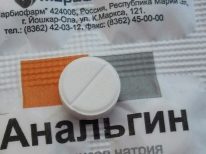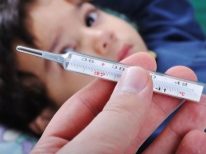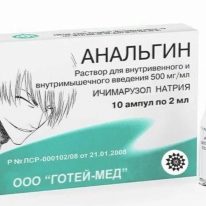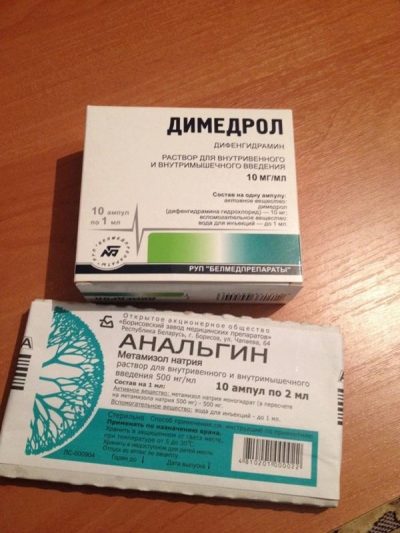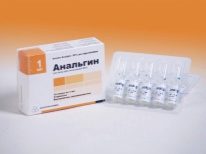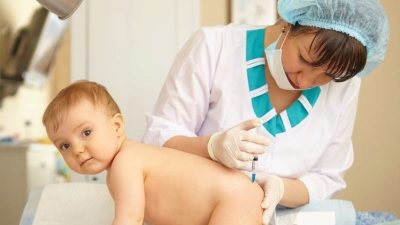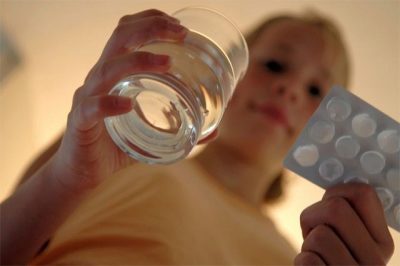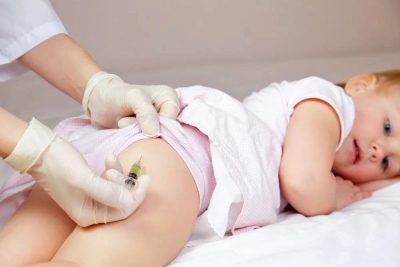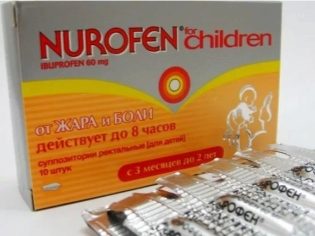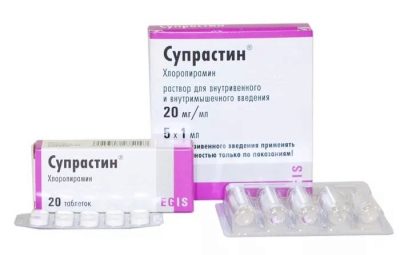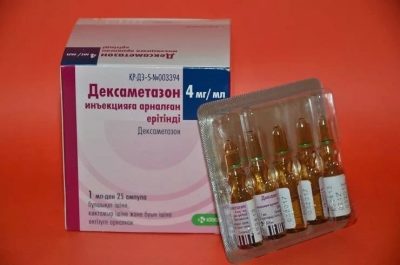Analgin with "Dimedrol": dosage for children
A child’s body often reacts with a high body temperature to infection with viruses or bacteria. With an increase of less than 38 degrees, the use of drugs to reduce the temperature is not recommended. However, severe fever or the danger of high fever for children require an immediate response from parents and doctors.
The most common anti-fever medications in childhood are Ibuprofen and Paracetamol. Such a drug as Analgin, used in children mainly one-time and in critical situations. In this case, quite often the combination “Analgin with diphenhydramine” is used. Why do these medicines are given at high temperature together and what proportions do they use for dosing for babies?
Characteristics of drugs
- Analgin produced in different forms - tablets, ampoules and candle lightthat are injected into the rectum. The main component of the drug is the substance "metamizole sodium", which is a derivative of pyrazolone. Depending on the form, it is supplemented with purified water, fats, talc or other compounds. Pediatricians prescribe this medication for children older than 3 months, but use in the age of up to one year should be very careful.
- Diphenhydramine produced in tablet form and ampoules. The injection form of the drug is prescribed to children older than a year, and the drug in pills is given to a child 7 years and older. If it is required to prescribe an antihistamine medicine to babies up to one year old, they prefer Suprastin, which can be used in the first year of life, except for the neonatal period.
How to act and when contraindicated?
The combination of Analgin and Dimedrol is required at elevated temperatures, because:
- Metamizole has a fast antipyretic effect, as well as an anesthetic effect, since such a substance is an anti-inflammatory nonsteroidal agent.
- Diphenhydramine refers to antihistamine drugs that affect histamine receptors, a mediator of allergic reactions. It eliminates puffiness and also has a soothing and sleeping pills action. In addition, this component reduces the risk of allergy to analgin.
Often, a third drug with an antispasmodic effect is added to this combination of medicines. Such medicine can be papaverine or No-shpa. Due to the effect on the walls of blood vessels, the antispasmodic eliminates their spasm and contributes to their expansion, therefore, this component is effective in "pale" hypothermia, also called malignant.
Analgin is used in children with diphenhydramine in a situation where fever is dangerous. For example, if a child's body temperature rises more than to + 39ºС or the baby has a risk of febrile seizures. Moreover, the combination of these drugs is contraindicated if the child:
- There is intolerance to any of the drugs;
- Hematopoietic processes are disturbed;
- There are serious liver pathologies;
- Renal failure detected;
- Developed bronchospasm.
Instructions for use
To reduce the temperature, Analgin and diphenhydramine can be used both in the form of tablets and as an injection. At the same time, injecting is more dangerous (higher risk of adverse reactions and allergies), so you need to prick the medicine only under the supervision of a physician. However, medications act in solution faster - approximately 10-15 minutes after the injection.
For the injection, sterile disposable syringes are used, and the injection site is necessarily treated with alcohol. Ampoules need to hold in your hands, so that the contents warmed up a bit. Next, they need to open and collect the right amount of each drug in one syringe.
The injection at home is done only intramuscularly.. In order for the mixture to enter the muscle tissue, the syringe must have a long needle. If drugs are administered subcutaneously, this can cause severe irritation or even inflammation.
If tablet forms are used, then both drugs in a suitable age ratio give the child to swallow in turn and drink a small amount of water. If it is difficult for a child to swallow a solid form, it is acceptable to crush a tablet and dilute it in a spoon with a small amount of water.
Dosage for children
In pills
Dose Analgin for children under 8 years of age must be calculated by weight. The number of kilograms corresponding to the body weight of a small patient is multiplied by 5 or 10, resulting in a daily amount of the drug in mg of metamizol sodium.
A single dose for a child who has not yet turned 3 years old should be no more than 100 mg, and for a child aged 4 years to 7 years, not more than 200 mg.
A child older than 8 years should be given 1/4 tablet of Analgin at one time, and the daily dose of this medicine should not be more than 300 mg.
Diphenhydramine is given to children over 7 years old on a quarter tablet at the reception.
In injection
The dosage of the injection form of Analgin is calculated in the same way as the drug in tablets. For children under 8 years of age, weight calculations will be more accurate. For every kilogram of baby's weight, take 5 mg of its active substance. For example, if a child in 2 years weighs 12 kg, then the daily amount of the drug will be 60 mg.
Dipedol in liquid form is administered to the child in a single dose:
| In 1-3 years | 0.5-1 ml |
| 4-6 years old | 1-1,5 ml |
| At 7-14 years | 1.5-3 ml |
What to replace or add?
Instead of Analgin in childhood, more often use drugs containing paracetamol or ibuprofen, for example, Panadol or Nurofen. They are considered physicians safer counterparts.
Replacement Dimedrol, as already specified above, often choose Suprastin, produced in tablets and in the injection form. Such an antihistamine can be given even to children under one year if the doctor sees the need for its use.
In addition to antispasmodics (no-shpy or Papaverine), this combination of drugs can be supplemented with the drug Dexamethasone. This is a hormonal remedy, which doctors use in emergency cases, so giving it to children on their own is unacceptable. It is produced in tablets and solution, is sold by prescription and is used at any age, but only according to indications.
In the next video, Dr. Komarovsky will tell you when the child needs shots at a temperature.

